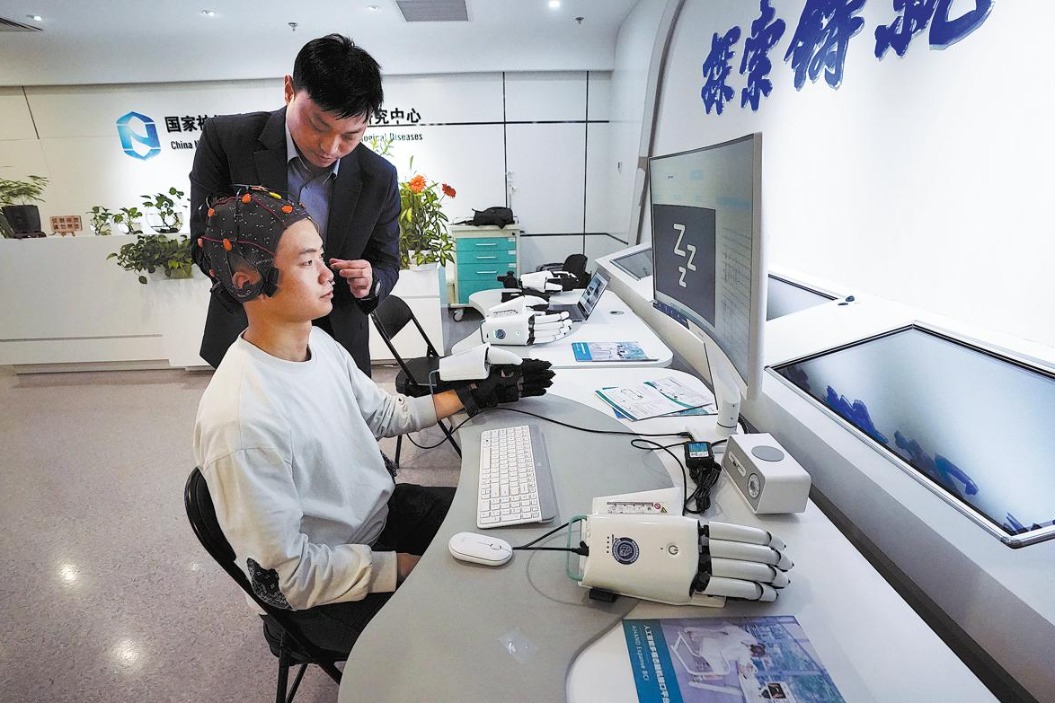Astronomical satellite detects gamma-ray bursts
By ZHAO LEI | CHINA DAILY | Updated: 2024-07-12 06:46
A cutting-edge astronomical satellite jointly developed by China and France has begun to produce scientific payoffs, as it recently detected three gamma-ray bursts, according to the Chinese Academy of Sciences.
The academy, the nation's top science body, announced this week that the Space Variable Objects Monitor, or SVOM, detected a gamma-ray burst on the morning of June 27, soon after its Gammaray Burst Monitor, one of the four mission payloads, was activated for tests earlier that morning.
The apparatus also detected two other gamma-ray bursts, on June 29 and July 2. The data of the three gamma-ray bursts has been sent to the General Coordinates Network, an international collaboration platform for astronomy research, according to the academy.
Gamma-ray bursts, immensely energetic explosions in distant galaxies, are the brightest and most extreme explosive events in the universe and the most energetic and luminous electromagnetic events since the Big Bang.
Before the scientific detection, the satellite had undergone in-orbit tests and established real-time connections with over 40 ground communication stations. All of its four mission payloads had successfully completed their power-on tests, said the academy.
Wei Jianyan, a scientist at the CAS' National Astronomical Observatories and the SVOM mission's Chinese principal investigator, said the detection results have testified to the monitor's capability.
"Other mission payloads on the satellite are still being fine-tuned and will undergo scientific capability tests. If the results are satisfactory, then we can expect exciting findings by the satellite in its ensuing operations," he said.
Initiated in 2005, the SVOM project is the result of a long-term collaboration between the China National Space Administration and France's National Center for Space Studies. It has involved scientists and engineers from multiple institutes, including the Research Institute in Astrophysics and Planetology in Toulouse, France, and the Institute of High Energy Physics in Beijing.
The SVOM is a combination of small telescopes. It was placed in a low-Earth orbit by a Chinese Long March 2C carrier rocket launched on June 22 from the Xichang Satellite Launch Center in Sichuan province.
The 930-kilogram satellite was built by the CAS' Innovation Academy for Microsatellites in Shanghai. It carries four scientific payloads: the ECLAIRs coded mask camera and the Microchannel X-ray Telescope made by French scientists, and the Gamma-ray Burst Monitor and the Visible Telescope built by the Chinese team.
The satellite, the best ever built for multiband comprehensive observation of gamma-ray bursts, is expected to play an important role in space-based astronomical exploration, according to the China National Space Administration.
The main scientific objectives of the mission include searching for and rapidly locating various gamma-ray bursts; comprehensively measuring and studying their electromagnetic radiation properties; using the bursts to study dark energy and the evolution of the universe; and observing electromagnetic signals associated with gravitational waves.
zhaolei@chinadaily.com.cn
























